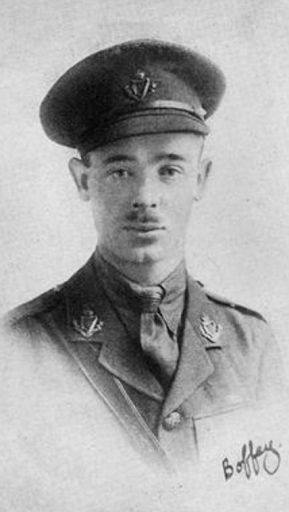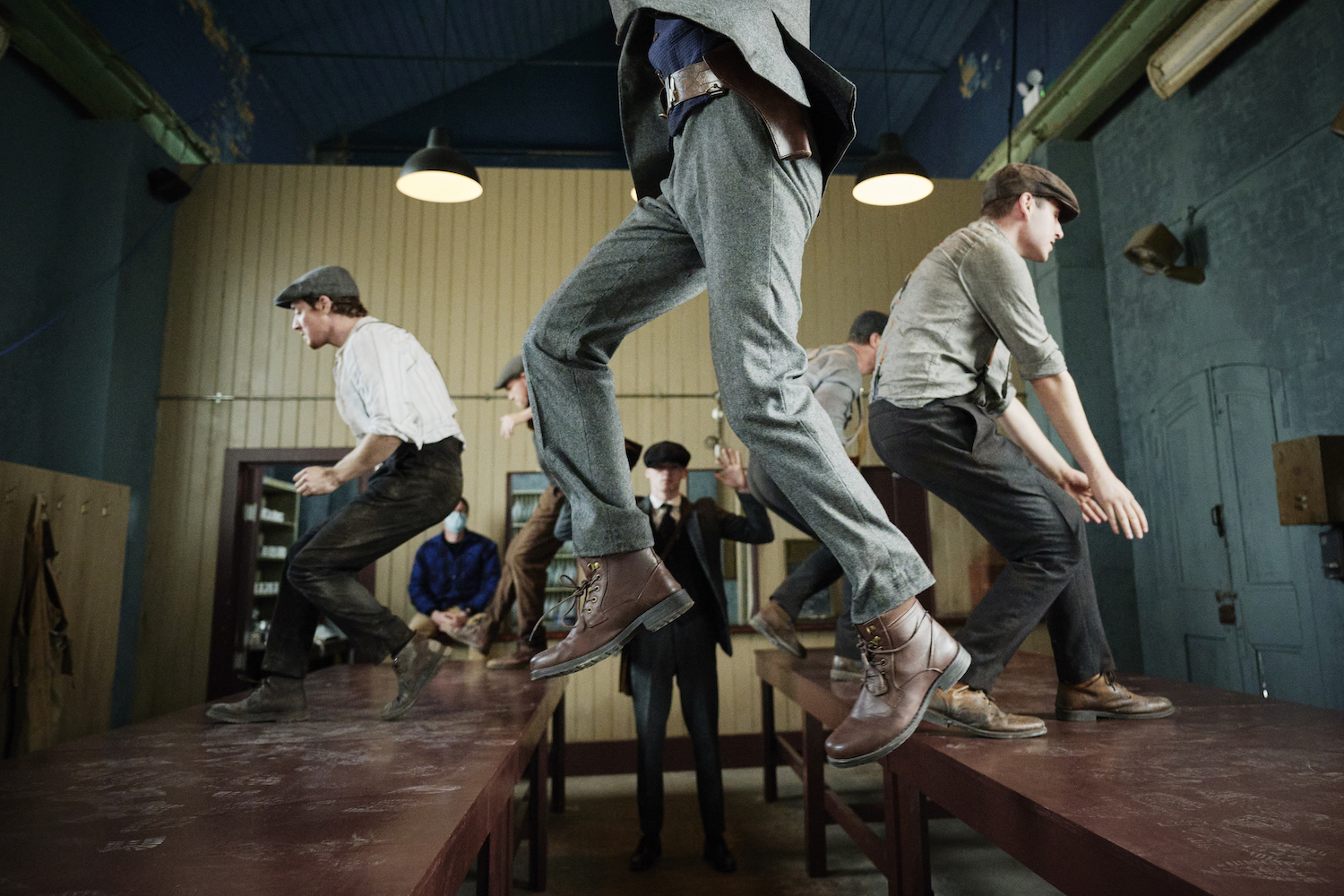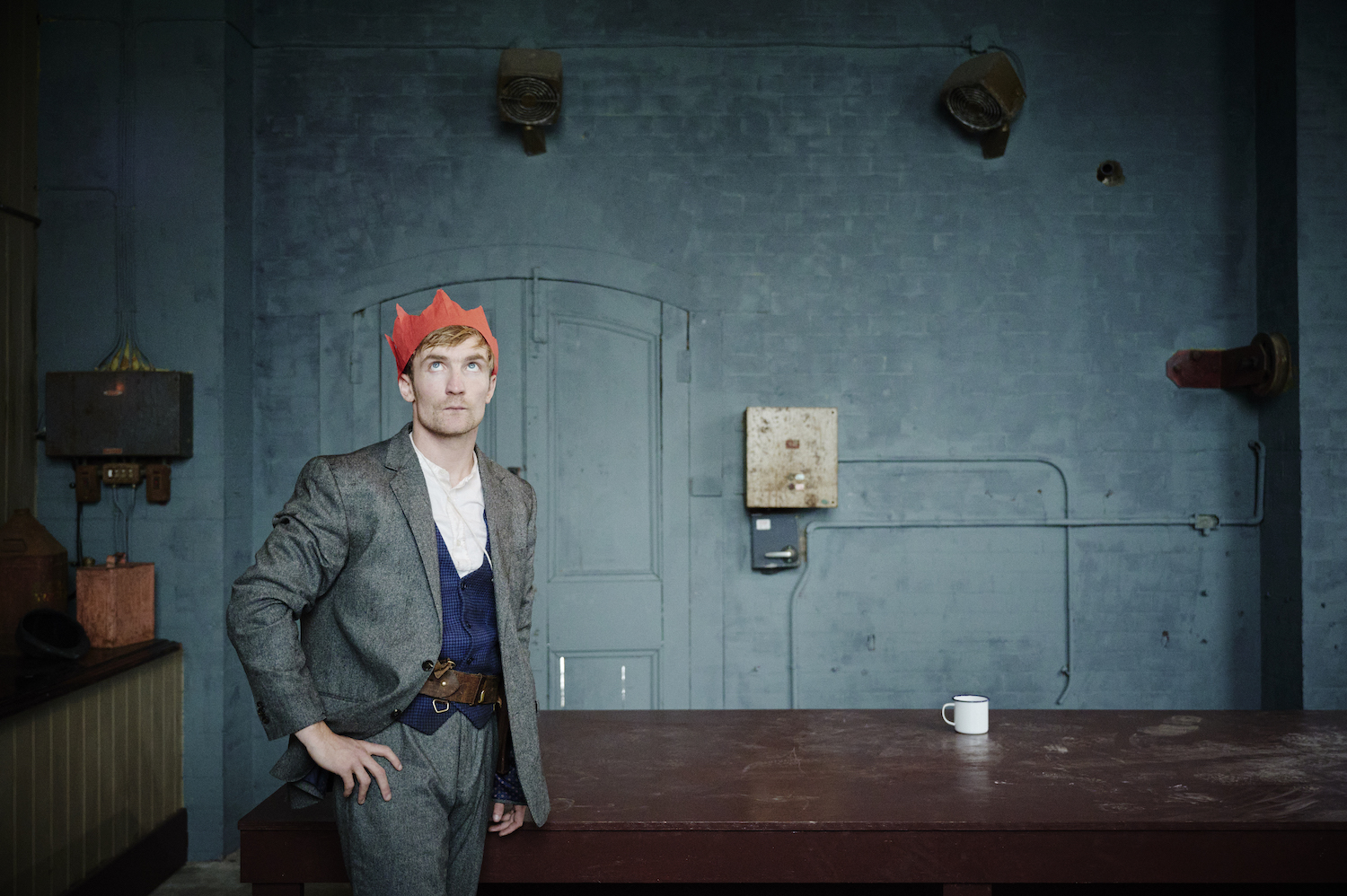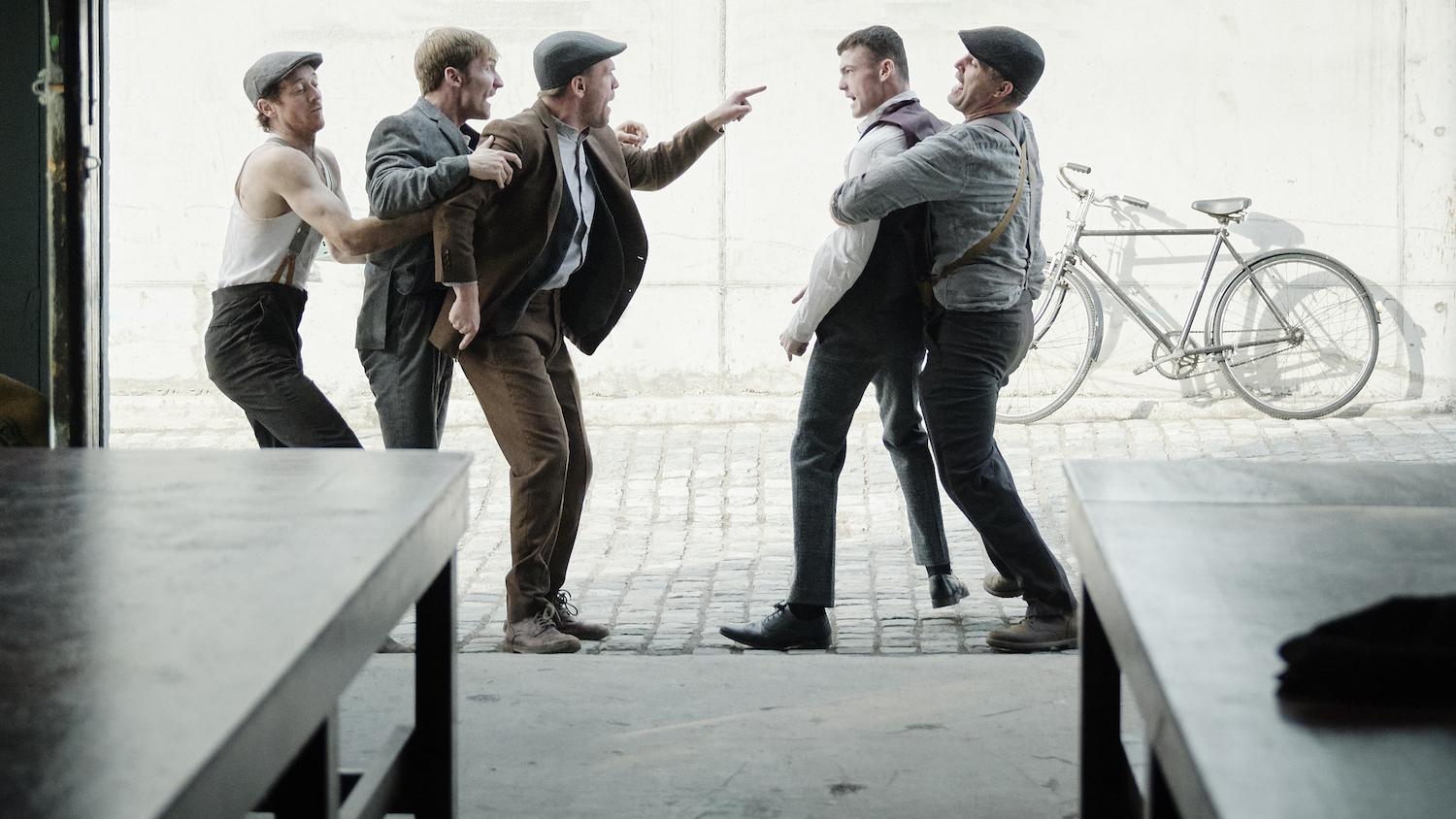
JOSEPHINE IS TRAVELLING
HOPPY HARDY – the central character we never meet.
“There are some wild birds who settle down in captivity,” Arthur Conan Doyle wrote of his friend Jocelyn Lee (Hoppy) Hardy… “There are others who alternate between brooding on their perch and dashing themselves against the bars. A man with such inventive power and desperate energy will surely make his mark in peace as well as in war.”
His prediction proved accurate. ‘ Hoppy’ Hardy, a lieutenant in the Connaught Rangers, certainly made his mark. Having lost his leg on the Western Front, he was deployed by Scotland Yard to bring together men to create the newly formed ADRIC division (Auxiliary Division of the RIC) to support their efforts in the War of Independence.
Here in Dublin, Hardy continued to wear this uniform of the Connaught Rangers and proved an exceptionally vicious interrogator. Ernie O’Malley, Kevin Barry and Tom Ennis are said to be amongst those to undergo his brutal torture tactics. Michael Collins labelled him “a notorious murderer”, responsible for the deaths of Paddy Kennedy, Seán Treacy in Talbot Street and Peter O’Carroll (Brendan O’Carroll’s grandfather, unravelled in a recent episode of Who do you think you are? for the BBC). Most famously he is linked to the deaths of Dick McKee, Peader Clancy and Conor Clune which marked the start of Bloody Sunday. Hardy himself was due to be assassinated the same day by the squad but escaped as he was interrogating the above in Dublin Castle.
Josephine is Travelling was the IRA codeword warning that the infamous auxiliary was nearby. Dublin Port was patrolled regularly and raided numerous times throughout the War of Independence. A central character we don’t meet, we hear instead from characters who have had encounters with him. Ed Dorrins, Harriette Lavery and Archie Kennedy all relay their experiences with Hoppy, projecting the entirety of the Crown forces onto this one man, allowing us to consider the visceral impact of him directly onto the characters.
CHARACTERS
SEÁN SLINEY | LEWIS BROPHY
Seán Sliney was among the IRA Active Service Unit (ASU) “Littlers”. Aged 16, he was captured at the Burning of the Custom House on 25th May 1921 and sentenced to execution in Mountjoy for high treason. His deceased father had been a cook in the prison and the governor told him he was a disgrace to his father’s name. He spent nearly 8 months on Death Row before being granted a reprieve during the Treaty debates in January 1922.
Seán was a fireball of energy who traversed the city on his bicycle, his satchel crammed with intelligence documentation, ammunition and firearms. He went on to fight in the Civil War in the free state army.
ARCHIE (JOHN) KENNEDY | TONY DOYLE
A member of Fianna Éireann and ardent follower of Tom Clarke, in 1912 Archie joined the I.R.B. (Irish Republican Brotherhood) and then the Irish Volunteers in 1913. In 1916, he fought in the Easter Rising.
He was instrumental in the formation and running of Q Company (April 1921) and in the recruitment of some 50-100 men in the area around the quays and shipping to assist in gun running and arms dumping.
As Captain of Q company, Archie was a well known and well liked figure. He used his shop-steward status well, moving stealthily about the Port without causing any notice to the powers that be. He went onto all the different ships coming into the port and managed to get at least two men in most vessels to agree to buy arms abroad and try to get them safely to Dublin.
Supporting the ASU, in a number of raids, ambushes and assassinations, he took part in Bloody Sunday in Mount Street. He supported the Treaty which tore apart Q company and his long friendship with Tom Leahy. In the Civil War he fought in the battle for Dublin in the Four Courts where he was promoted to Captain in the Free State Army.
EDWARD DORRINS | DARRAGH FEEHELY
Edward was a plumber in Dublin Port and a member of the IRA.
It is not known when he became involved in Republican activities but his family home was raided by Auxiliaries on 5th February 1921 and he was beaten up and thrown into the Liffey at Grattan Bridge (Capel Street). He was shot in the water and eventually managed to climb out of the river at Butt Bridge. He was treated at Jervis Street Hospital for a week and then had to leave that hospital quickly because of a tip-off that it was to be raided. The incident was widely reported in Ireland at the time in the Freeman’s Journal and in the Irish Independent. Thomas Griffiths, Labour M.P. spoke about his ill-treatment at the hands of the Auxiliaries in the House of Commons.
Three months later Dorrins (aged 23) was shot dead during the Battle of the Custom House on 25th May, 1921, an action which is believed to have led directly to the truce and to the independence of the Irish Free State. Disguised as a painter and decorator, he was killed while attacking a tender full of Auxiliaries in Beresford Place.
CONSEQUENCE HALPIN | MICHAEL GLENN MURPHY
Halpin worked as a plater in the Dublin Dockyard. He was a trade union activist and a member of the Irish Citizen Army. He always endeavoured to impress upon his listeners, off parade as well as on parade, his higher knowledge of things which were happening or supposed to be happening. He adorned his ICA uniform with embellishments and carried a sword, causing James Connolly to declare that ‘every regiment is entitled to its mascot’. Seán O’Casey is supposed to have been inspired by him to write the character of Uncle Peter. During the Rising, he was part of the City Hall Garrison, almost avoiding capture by utilising his small size to hide within a chimney in City Hall for almost three days.
He was taken from Richmond Barracks (then Knutsford Detention Barracks) and then onto Frongoch where he was reunited with Tom Leahy (his neighbour and co-worker) who looked after him. Like Leahy, he came back to work in the Port and opposed the treaty of 1921, on both socialist as well as Republican principles. He fought on the Republican side during the Civil War and was injured by a bomb during an attack in Bolton Street. After recuperating he went on the run and continued with the Anti-Treaty Forces up to the cessation of activities in 1923.
HARRIETTE LAVERY | ÚNA KAVANAGH
Harriette Lavery ran the Central Photography Studio, 13 North Earl Street with her daughter Maynie. There she photographed hundreds of Auxiliaries and Black and Tans who came to have their portrait taken to send back to families and friends. She created duplicates of their photographs and forwarded these to IRA intelligence (alongside detailed descriptions of the men) for targeting.
Harriette was later arrested by the Free State Army for Republican activities. In 1923 she contracted anthrax poisoning from infected straw bedding in the Dublin Union and later died in a cell she shared with her daughter Maynie in Kilmainham Jail.
JIMMY WALSH | DIARMIUD O’DWYER
16-year-old farm labourer Jimmy Walsh claimed that the Virgin Mary visited him in his bedroom and told him to dig a holy well in the floor. He asserted that she had messages for the IRA and that she supported their efforts in the War of Independence, particularly in the killing of Auxiliaries and Black and Tans. Furthermore, he claimed that religious statues owned by him were moving and bleeding. In response, miraculous cures were alleged throughout the town and the religious fervour that gripped Ireland led to an influx of thousands of pilgrims to his home and place of work.
Despite profiting greatly from the pilgrims, many in the IRA were skeptical of the miracles. Michael Collins called on Dan Breen to bring Jimmy to Dublin to be questioned. When Collins broke open the Virgin Mary statue, he discovered it to contain an alarm clock and a fountain pen of sheep blood. Jimmy later emigrated to Australia.
In a strange turn of events, Diarmuid who plays Jimmy is a descendent of the legendary Dan Breen, the IRA man who brought Jimmy on the train to be interviewed.
TOM LEAHY | JAMIE O’NEILL
Tom Leahy worked as a boiler-maker in the Dublin Dockyard Company. He fought extensively in the Easter Rising, ending up in Moore Street alongside Oscar Traynor and Michael Collins and pulled The O’Rahilly’s body off Moore Street under tremendous gunfire.
On his release from Frongoch, Leahy was re-employed by the Dublin Dockyard Company. Within weeks of returning he took on the role of Shop Steward of the riveters. Soon he was joined by several former comrades including Archie Kennedy. Together they stole arms and ammunition from naval vessels and helped many men on the run, often hiding them in the quartermaster’s office or finding jobs for them using the yard’s facilities and their own skills to make “train wrecking tools . . . and everything that would be useful when required”. In the 1918 election he campaigned for the Sinn Féin candidate in the north docks area, Phil Shanahan, and engaged in talks with Michael Collins and Countess Markievicz to establish a new union. In 1920 he became a trustee of the Irish Engineering, Shipbuilding and Foundry Workers’ Trade Union.
In the Civil War Leahy took the anti-Treaty side, leading a section in ‘the block’, tunneling through rooms in the Gresham and Hammam Hotels. Following heavy bombardment, he was arrested and sentenced to death in Mountjoy by his former friends but was later released. He never found re-employment in the Port or Docks and emigrated to Glasgow.
MICHAEL SMYTH | THOMAS REILLY
Smyth (nicknamed ‘Tiger’ Smyth) was a well respected operator and bomb maker. Having fought in 1916 and Bloody Sunday, he also served as a bodyguard to Michael Collins during his election campaign.
Unlike his friend Willie Byrne (see below), he took the anti-Treaty side, and was eventually arrested by the National Army on the North Strand in a commandeered car with weapons and ammunition stolen from the Custom House. His former comrade General Tom Ennis claimed that “On the formation of the National Army I offered Michael Smyth the rank of Captain if he would join, an offer I again repeated when he was a prisoner in Gormanstown Camp – both of these offers he turned down”.
WILLIAM BYRNE | MATTHEW WILLIAMSON
William Byrne worked for the Dublin Port and Docks Board but this Pensionable job was lost in 1916 for fighting in the Rising. Like many other Republicans he afterwards worked in the Dublin Dockyard under Q company where Tom Leahy and Archie Kennedy favoured Republicans and Labour men. He was a very successful smuggler and availed of the opportunity to make munitions including taking part in a raid for ’17 pounder shells’. He detailed some of his local operations as “the planning. preparations and carrying out of the attack on the Customs House in Dublin in May 1921, the burning of the city of Dublin Stores and an attack on members of the Auxiliary Police Force (Auxiliaries) at the London and North Western Railway Hotel that same year”
He spent time with his pal Michael Smyth (above) serving as bodyguards to Michael Collins during his election campaign and both were involved in a planned Bloody Sunday attack in East Wall but when they arrived their intended target wasn’t home. Following the Treaty signing he joined the National Army in March of 1922, fighting in the Civil War and was later promoted to be in charge of Court Marshalls.


